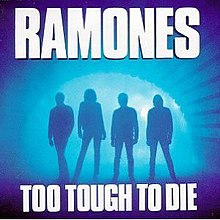
Jeffrey Ross Hyman, known professionally as Joey Ramone, was an American singer, best known as the lead vocalist and a founding member of the punk rock band Ramones. His image, voice, and his tenure with the Ramones made him a countercultural icon. He, along with the guitarist Johnny Ramone, are the only two original members who stayed in the band until the disbandment in 1996.

Douglas Glenn Colvin, better known by his stage name Dee Dee Ramone, was an American musician. He was the bassist and a founding member of the punk rock band the Ramones. Throughout the band's existence, he was the most prolific lyricist and composer, writing many of their best-known songs, such as "53rd & 3rd", "Chinese Rock", "Commando", "Wart Hog", "Rockaway Beach", "Poison Heart" and "Bonzo Goes To Bitburg". The latter won the New York Music Award for best independent single of the year in 1986, while Animal Boy, which the song is from, won for best album.

Rocket to Russia is the third studio album by the American punk rock band Ramones, and was released on November 4, 1977, through Sire Records. It is the band's last album to feature original drummer Tommy Ramone, who left the band in 1978 to focus on production. The album's origins date back to the summer of 1977, when "Sheena Is a Punk Rocker" was released as a single. That summer was known as the peak of the punk rock genre since many punk bands were offered recording contracts. The album's recording began in August 1977, and the band had a considerably larger budget with Sire allowing them between $25,000 and $30,000; much of this money went toward the album's production rather than recording.

End of the Century is the fifth studio album by the American punk rock band Ramones, released on February 4, 1980, through Sire Records. The album was the band's first to be produced by Phil Spector, though he had offered the band his assistance earlier in their career. With Spector fully producing the album, it was the first release that excluded original member Tommy Ramone, who had left the band in 1978 but had produced their previous album Road to Ruin. Spector used more advanced standards of engineering, such as high-quality overdubbing and echo chambers. These painstaking methods caused conflict between the band and Spector since the Ramones were accustomed to a quicker recording process. Spector emphasized the production value as well, working with a budget of around $200,000, far exceeding their earlier album sessions.
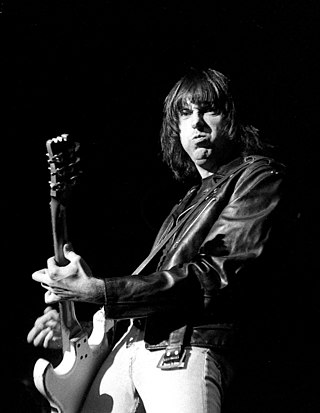
John William Cummings, better known by his stage name Johnny Ramone, was an American musician who was the guitarist and a founding member of the Ramones, a band that helped pioneer the punk movement. The band was inducted into the Rock and Roll Hall of Fame in 2002. Until the band's disbandment in 1996, Johnny, along with the lead vocalist Joey Ramone, were the only two original members who stayed since its inception.
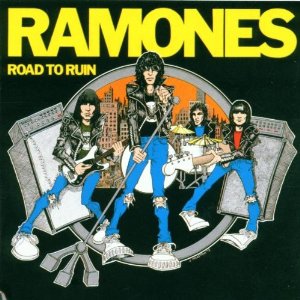
Road to Ruin is the fourth studio album by the American punk rock band Ramones, released on September 22, 1978, through Sire Records as LP record, 8 track cartridge & audio cassette. It was the first Ramones album to feature new drummer Marky Ramone, who replaced Tommy Ramone. Tommy left the band due to low sales of previous albums as well as stress he experienced while touring; however, he stayed with the band to produce the album with Ed Stasium. The artwork's concept was designed by Ramones fan Gus MacDonald and later modified by John Holmstrom to include Marky instead of Tommy.

Thomas Erdelyi, known professionally as Tommy Ramone, was a Hungarian-American musician. He was the drummer for the influential punk rock band the Ramones from its debut in 1974 to 1978, later serving as its producer, and was the longest-surviving original member of the Ramones.

Pleasant Dreams is the sixth studio album by the American punk rock band Ramones, released on July 20, 1981, through Sire Records. While the band members wanted Steve Lillywhite to produce, Sire chose Graham Gouldman in an attempt to gain popularity through a well-known producer. The recording process brought about many conflicts between band members, most notably the strife between Joey Ramone and Johnny Ramone, due to Johnny starting a relationship with Joey's girlfriend. There were also disputes about the overall direction of the album, with Johnny leaning towards hard rock and Joey towards pop punk. Ultimately, the album incorporated high production values and varying musical styles, straying from traditional punk rock on songs such as "We Want the Airwaves", "She's a Sensation" and "Come On Now". It is the first Ramones album not to feature any cover songs.

Leave Home is the second studio album by the American punk rock band Ramones. It was released on January 10, 1977, through Sire Records, with the expanded CD being released through Rhino Entertainment on June 19, 2001. Songs on the album were written immediately after the band's first album's writing process, which demonstrated the band's progression. The album had a higher production value than their debut Ramones and featured faster tempos. The front photo was taken by Moshe Brakha and the back cover, which would become the band's logo, was designed by Arturo Vega. The album spawned three singles, but only one succeeded in charting. It was also promoted with several tour dates in the United States and Europe.

Halfway to Sanity is the 10th studio album by the American punk rock band Ramones, and their last album to feature drummer Richie Ramone. It was produced by Daniel Rey and released on September 15, 1987, by Sire Records. Recording sessions began that April at Intergalactic Studios in New York City, with the band recording instruments before vocals in order to learn songs more quickly. It fared well on charts outside the United States, but peaked at No. 172 on the Billboard 200.

Subterranean Jungle is the seventh studio album by the American punk rock band Ramones, released by Sire Records on February 23, 1983. Overall, the album featured a return to a somewhat more hard punk rock style compared to the band's previous two albums End of the Century in 1980, and Pleasant Dreams in 1981, which were the most pop-focused of the band's career. This direction was encouraged by guitarist Johnny Ramone. The recording sessions saw disputes between band members, mainly due to struggles with alcohol addiction by Joey Ramone and Marky Ramone, and the drug addiction of Dee Dee Ramone.
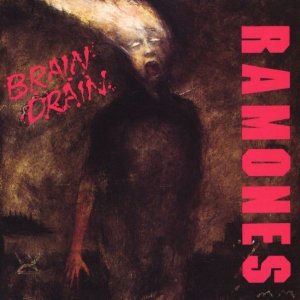
Brain Drain is the eleventh studio album by the American punk rock band Ramones, released on May 23, 1989. It is the last Ramones release to feature bassist/songwriter/vocalist Dee Dee Ramone, the first to feature Marky Ramone since his initial firing from the band after 1983's Subterranean Jungle and the band's last studio album on Sire Records. It ends with their unlikely seasonal song "Merry Christmas ".

Mondo Bizarro is the twelfth studio album by American punk rock band Ramones, released on September 1, 1992, by Radioactive Records. It is the first studio album to feature their new bassist, C.J. Ramone, who replaced original member Dee Dee Ramone. The album was re-released in the UK by the Captain Oi! record label on August 10, 2004, with the band's cover of the Spider-Man theme song included as a bonus track.

Animal Boy is the ninth studio album by the American punk rock band Ramones, released through Sire Records on May 19, 1986. Due to conflicts within the group, the album features less of lead singer Joey Ramone, both in performing and writing, and less performing from guitarist Johnny Ramone. Bassist Dee Dee Ramone wrote and sang more on this album than on previous albums, and Richie Ramone became the first drummer to write songs for the band since Tommy Ramone, the band's original drummer. Richie also wrote for Too Tough To Die (1984). The album spawned four singles, all of which charted on the UK Singles Chart, as well as other charts. In addition to singles, the band promoted their album using a music video for "Something to Believe In", which parodied the contemporary benefit concerts Live Aid and Hands Across America.

¡Adios Amigos! is the fourteenth and final studio album by the American punk rock band Ramones. It was released on July 18, 1995, through Radioactive Records. The Ramones disbanded a year after its release and subsequent tour.
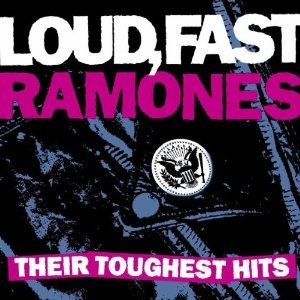
Loud, Fast Ramones: Their Toughest Hits is a compilation of Ramones songs. Curated by Johnny Ramone, the initial 50,000 copies of the album include the 8-song bonus disc Ramones Smash You: Live ’85. The bonus disc features previously unreleased live recordings made on February 25, 1985 at the Lyceum Theatre in London. It is notable for being the only officially released live recording on CD to feature Richie Ramone on drums.

Ramones Mania is the first greatest hits album by the American punk rock band the Ramones. It was released on May 31, 1988 through Sire Records and consists of 30 Ramones songs, including some single versions, a single B-side and one previously unreleased take.

"Rock 'n' Roll High School" is a song by American punk rock band Ramones, from the soundtrack album Rock 'n' Roll High School. The single did not chart in the U.S. but peaked at number 67 on the UK Singles Chart.
"Durango 95" is a short instrumental by the punk rock band The Ramones. It is the fourth track on their eighth studio album Too Tough to Die. The song is a cultural reference to the car driven by Malcolm McDowell's character in the 1971 film A Clockwork Orange. The cover of the Too Tough to Die LP recalled a scene in the film. The track is also the only instrumental piece that the band ever recorded.

The Ramones were an American punk rock band formed in the New York City neighborhood Forest Hills, Queens in 1974. Known for helping establish the punk movement in the United States, the Ramones are often cited as the first true punk band. Though achieving little commercial success, the band is seen today as highly influential in punk culture.
